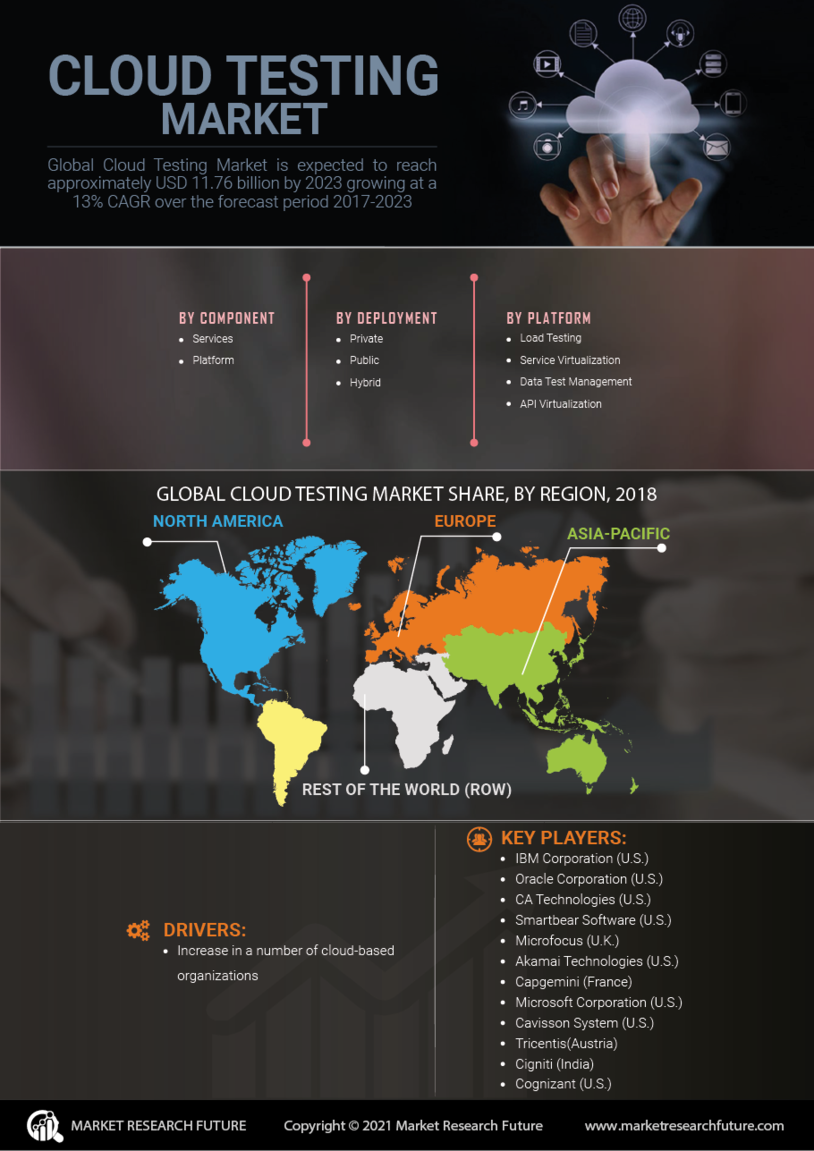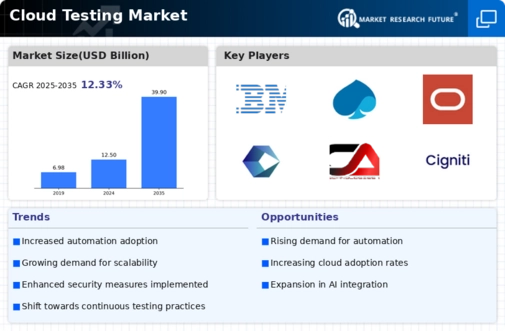Rise of DevOps Practices
The Cloud Testing Market is being positively influenced by the rise of DevOps practices, which emphasize collaboration between development and operations teams. This approach fosters a culture of continuous integration and continuous delivery (CI/CD), where testing becomes an integral part of the development lifecycle. The adoption of DevOps is expected to grow, with estimates suggesting that over 70% of organizations will implement DevOps practices by 2026. This trend creates a substantial opportunity for cloud testing solutions that can seamlessly integrate into DevOps pipelines, ensuring that applications are tested thoroughly and efficiently. As organizations seek to enhance their operational efficiency, the Cloud Testing Market is likely to see increased investment in tools that facilitate DevOps-driven testing.
Adoption of Cloud Technologies
The Cloud Testing Market is benefiting from the widespread adoption of cloud technologies across various sectors. As organizations migrate their applications and infrastructure to the cloud, the need for effective testing solutions that can operate in cloud environments becomes paramount. The cloud services market is projected to grow significantly, with estimates suggesting a value exceeding 500 billion dollars by 2026. This growth indicates a strong demand for cloud testing services that can ensure the quality and performance of applications in cloud settings. As businesses increasingly rely on cloud-based solutions, the Cloud Testing Market is poised to capitalize on this trend, providing essential testing capabilities that align with cloud technologies.
Growing Demand for Agile Development
The Cloud Testing Market is experiencing a surge in demand driven by the increasing adoption of agile development methodologies. Organizations are shifting towards agile practices to enhance their software development processes, which necessitates continuous testing and integration. This shift is likely to propel the need for cloud-based testing solutions that can support rapid deployment cycles. According to recent data, the agile market is projected to grow at a compound annual growth rate of over 20%, indicating a robust demand for cloud testing services that align with agile principles. As businesses strive for faster time-to-market, the Cloud Testing Market is positioned to benefit significantly from this trend, as it offers the flexibility and scalability required for agile environments.
Escalating Need for Enhanced Security
In an era where data breaches and cyber threats are prevalent, the Cloud Testing Market is witnessing an escalating need for enhanced security testing solutions. Organizations are increasingly prioritizing security in their software development processes, leading to a demand for cloud testing services that can identify vulnerabilities and ensure compliance with regulatory standards. Recent statistics indicate that The Cloud Testing Market is expected to reach over 300 billion dollars by 2026, highlighting the critical importance of security in software development. As businesses recognize the necessity of robust security measures, the Cloud Testing Market is likely to expand, offering specialized testing services that address security concerns effectively.
Emergence of IoT and Connected Devices
The emergence of the Internet of Things (IoT) and connected devices is driving innovation within the Cloud Testing Market. As more devices become interconnected, the complexity of software testing increases, necessitating specialized testing solutions that can handle diverse environments and scenarios. The IoT market is expected to grow exponentially, with projections indicating that there will be over 75 billion connected devices by 2026. This proliferation of devices creates a substantial opportunity for cloud testing services that can ensure the functionality and reliability of applications across various platforms. As organizations seek to leverage IoT technologies, the Cloud Testing Market is likely to expand, offering tailored testing solutions that address the unique challenges posed by connected devices.


















Leave a Comment